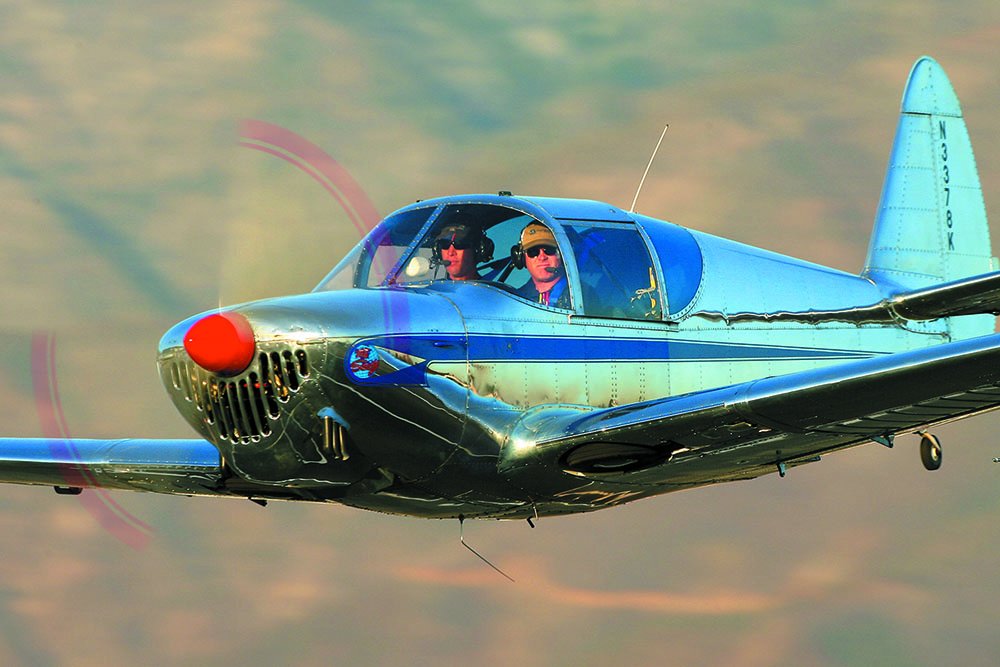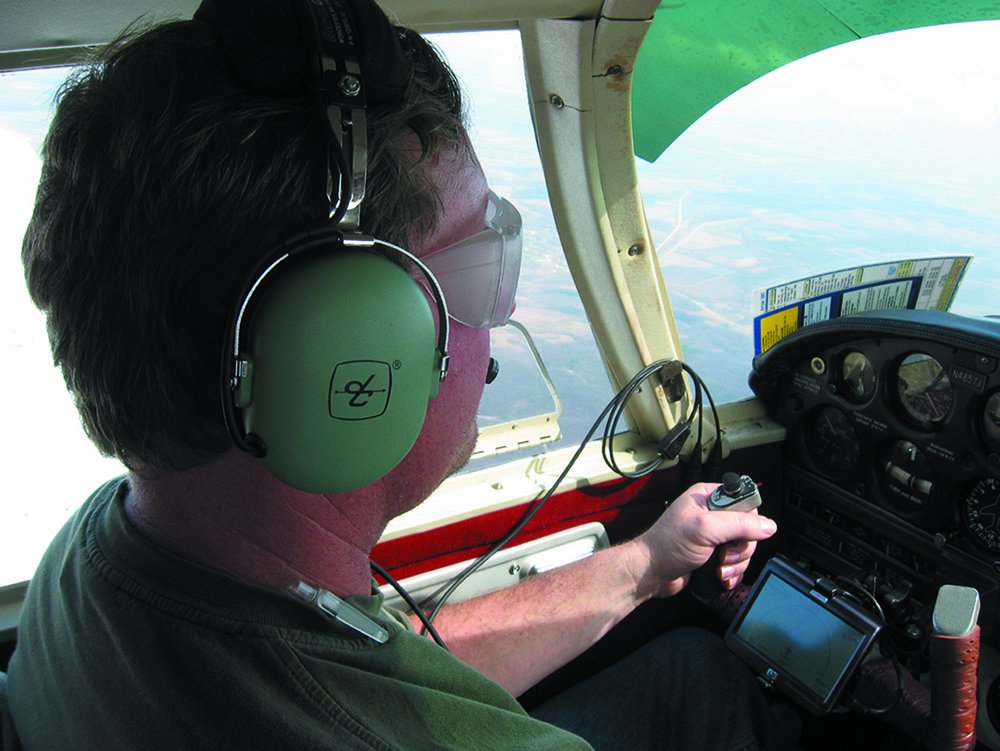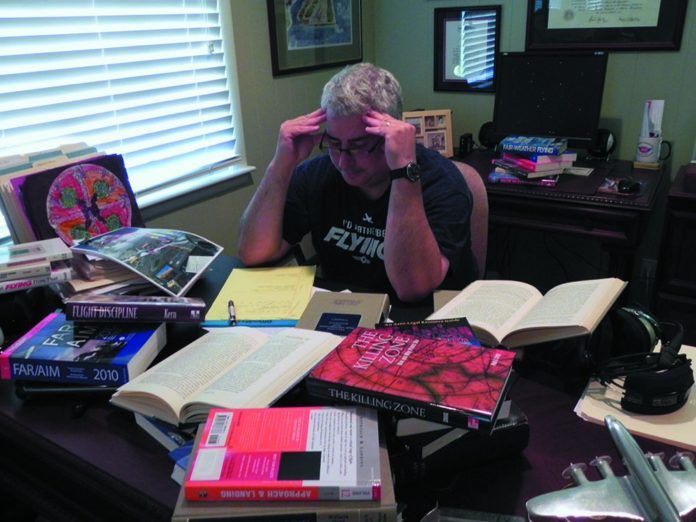The Flight Review (FR, it hasn’t been BFR for decades) is a fact of every pilot’s aeronautical life. FAR Part 61.56 mandates a flight review or one of a specified list of alternatives every 24 calendar months for every person who desires to fly as pilot in command. Most pilots chose to take the flight review route to compliance—rather than one of the alternatives. As with anything we do around aircraft, how can we maximize the value of our flight reviews while minimizing cost and inconvenience, especially if we haven’t been flying much and are a little concerned about maybe being rusty in some areas?
The good news is that there are a number of resources available to pilots to help them through their flight review, and that the best of those are free. We’ll give you a rundown of what’s available as we’ll as how to work with an instructor to make the review as efficient as possible and look at the alternative methods of complying with the recurrent training requirement.
What It Is
Stripped to the essentials, to successfully complete a FR, the FAA requires that you spend a minimum of an hour of ground and flight training and receive an endorsement from an authorized flight instructor that you have demonstrated the safe exercise of the privileges of your pilot certificate. The subjects to be covered on the ground are operating and flight rules of FAR Part 91; in the air, the maneuvers and procedures required are at the discretion of the instructor.

Because of the discretion allowed on the part of the instructor, our recommended approach to flight reviews is to communicate with the instructor ahead of time to tailor it to your particular needs.
Frequency
A flight review is only required biennially (once every two years—not biannually, twice a year). Nevertheless, our research into accident data indicates that a major variable in the risk faced by a pilot on any given flight is the period of time since her or his last flight review—the longer, the higher the risk. Frequent recurrent training is a magic bullet for flight safety—it’s a major reason that pilots who are required to take recurrent training every six months have an accident rate that is only a fraction of that of all of general aviation. So we’ll say it up front, we recommend taking a flight review every six months—there’s no downside and the data says there is a big upside.

Tailor It
In researching this article, we spoke with instructors at a number of flight schools. Most told us that they wanted to communicate talk/email/text with the pilot we’ll in advance of the scheduled session. They wanted to know the type of flying the pilot was doing, how often she flew and what the pilot felt were her strengths as we’ll as areas that needed work.
The instructors also said that the geographic area where the pilots regularly flew mattered. Amelia Jayne, who has been instructing for over 30 years at Michigan Flyers in Ann Arbor, Michigan, told us that such things as the proximity of an international border, Class B airspace, Saturday TFRs over the nation’s largest football stadium (within two miles of the airport) and Great Lakes weather all were items to fold into a FR a pilot takes in southeastern Michigan.
Michael Shannon, until recently the chief flight instructor at the Aspen Flying Club on Denver’s Centennial Airport, pointed out there were specialized issues to discuss with regarding to flying where the Great Plains met the Rockies, but emphasized that one of the significant risk factors faced by even pilots who flew regularly was the things that they didn’t do practice—usually emergency procedures and maneuvering. We especially liked one of the areas he included during the pre-FR conversations he had with his clients: asking their flying goals for the next year, so he could incorporate them into the FR and get the pilot started toward those goals.
Shannon also told us that many of the pilots who went through tailwheel checkouts at Aspen also completed a flight review. As there is little extra to do to comply with the FR requirements on top of a tailwheel endorsement, it made sense to us.
Based on our conversations with instructors who regularly give flight reviews, pilots who have had good and bad experiences with flight reviews and giving FRs, we cannot recommend strongly enough good pre-FR communication between you and your CFI in which you discuss the flying you’re doing, the flying you want to do and the things that make you uncomfortable.
In those conversations, we also recommend discussing the specific risks you face in the type of flying you do—such as runway loss of control on landing, night instrument approaches, low altitude maneuvering—and how you want to factor training to reduce those risks into the FR. A little time spent with the Nall Report with its general aviation accident data can help you identify risk factors for the type of flying you do.
If you regularly fly one or a few types of airplanes, log into Aviation Consumer‘s website (www.aviationconsumer.com) and look up the Used Aircraft Guides for those airplanes. You’ll find a breakdown of the types of accidents for each. If, for example, you fly an airplane that has a high proportion of fuel-related accidents, a review of the fuel system is probably a good idea during the ground portion of your FR.

Your instructor should tell you the areas of Part 91 operations that he will ask you about and can point you at reference material to help you brush up.
In terms of the risks you face of violating a reg, the hot items are TFR and airspace busts as we’ll as runway incursions. Airport surface markings and signage continue to evolve and ATC terminology for surface ops have changed, so those are always areas to plan on covering during your FR.
The pre-FR conversation with your CFI is also the time to ask the questions that you want answered. As you are preparing, make a list of your questions and get them to your CFI. We think a good FR is a two-way street.
By the time you have completed your pre-FR communication with your instructor, you should have an agenda outlined. The idea is for there to be no surprises for you during the FR. You cannot fail a flight review—it’s not a checkride. Nevertheless, in our opinion, the purposes of a FR are for you to brush off the rust, assure you know the regs that affect the flying you do, know the systems of your airplane and can demonstrate that you can fly the airplane in a safe manner, exercise good judgment and handle emergencies. It is not a stump the chump exercise—the entire environment should be supportive and open so that you can meet your goals and get the endorsement you need.
Keeping It Affordable
By and large, the more you put into preparation before your FR, the more likely it is that you’ll finish up without breaking a sweat or the bank. That means doing your homework so that you are ready to demonstrate that you know Part 91 and your airplane so that you don’t drag out the ground session. Going into your FR as an empty vessel to be filled up by your instructor is a sure way to make it expensive.
Recognize that if you haven’t been flying much, you may not finish up your FR in one session. That’s okay. The idea is to demonstrate proficiency—getting there may take some practice with your CFI. It may turn out that all the hundred-dollar-hamburger flights you’ve been making mean that you can hold altitude in cruise within 50 feet and make great landings, but that it’s been so long since you did any maneuvers or tried a forced landing that your first attempts are embarrassing. Again, that’s okay. You’re in the perfect situation to get those rusty areas fixed without putting yourself or passengers at risk—with an instructor in the other seat ready to catch you if you slip off the tightrope.
The FR is also an ideal time to push the limits of your comfort zone. Why not spend a few minutes assuring yourself that the airplane can be flown safely within a few knots of the stall or practice landing in a strong crosswind?
The CFI’s Obligation
As a client, your CFI has obligations to you. Above all, he should be professional at all times. In preparation for your FR, your CFI should be willing to spend time setting up a syllabus or agenda for what you will cover and objective standards you will have to meet to receive an endorsement of satisfactory completion. You should know in advance how much your CFI charges for instruction—usually an hourly rate that includes time on the ground and in the air. If you don’t get all the above, go elsewhere.
Professionalism on the part of your CFI also includes being on time for your FR and fully prepared, not allowing interruptions during your session, providing a frank evaluation at the end and an endorsement of satisfactory completion if you met the performance demands.
In our opinion, an ethical instructor will challenge a pilot to perform at the top of his or her skill during a FR and, recognizing the safety value of recurrent training, will never provide an endorsement for inadequate performance–or not even flying–in return for a fee or favor.

While most FRs are completed in one session (weather permitting), if you are rusty it’s reasonable for it to take multiple sessions. That should be understood going in. A CFI should never refuse an endorsement by calling for an additional session because of a desire to make more money off of the client. The objectives and completion standards should be such that if the client doesn’t meet them, the client will know it.
One of the toughest times an instructor has is with a client who does a poor job during a FR session and also is so poor at evaluating himself that he thinks he did great. It’s rare, but it happens, and a good CFI will deal with it by using objective standards to show failure to comply such as inability to hold altitude, heading or airspeed within agreed parameters.
On the other hand, there are some instructors who do prolong FRs unreasonably. If you feel that is happening or has happened, we recommend stopping the session, stating that you feel you had met the parameters and the reasons why. If the instructor does not agree, escalate it to the chief instructor. You may or may not get some portion of a refund. Nevertheless, if you do not receive an endorsement that you believe, as objectively as possible, you deserved, go to another instructor and finish up. Note, however, that if your FR has elapsed, you cannot fly as PIC—and that means solo—until you get another endorsement.
Conclusion
We think that flight reviews, especially conducted at least once a year, increase flight safety. We recommend that for the most effective and efficient flight review, a pilot should be willing to communicate with his CFI ahead of time to set up an agenda and completion standards and then do his homework into the easily available review materials. That should help a pilot to get the greatest benefit from the flight review session while keeping the cost reasonable.


